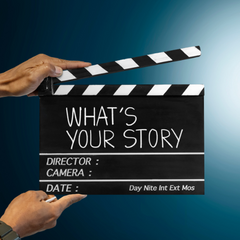
Struggling to boost sales with your writing?
Wanna possess the rare power to persuade readers to buy from you – on command?
Look:
Persuasive writing is an art form.
And mastering it can be your golden key to unlocking massive wealth, happiness and FREEDOM in the world of copywriting.
But where do you start?
How do you grab your audience's attention and keep them hooked?
And most importantly, how do you turn that attention into sales?
In this blog post you’ll learn…
What persuasive writing is, why it's 100% mandatory for YOUR SUCCESS, and 10 powerful persuasive writing techniques, used by master persuaders, to multiply your sales.
Whether you're a seasoned copywriter looking to sharpen your sword or a newbie eager to learn the prickly ropes, these persuasive writing tips will help you take your copywriting game to the next level.
What is Persuasive Writing?

Persuasive writing is the art of convincing your audience to take a specific action.
In the wicked world of copywriting, persuasive writing is all about whipping up irresistible messages that resonate with your target audience and motivate them to buy your product or service.
But it's not just about presenting information.
It's about tapping into the emotions, desires, and needs of your readers to sway their decision-making process in your favor.
Imagine:
You're a master painter.
But instead of brushes and canvases, you wield words to paint vivid pictures in the minds of your audience.
Your goal isn't just to inform or entertain; it's to persuade—to spark a desire so intense that your readers can't help but take action.
Why is Persuasive Writing Crucial for Copywriters?

Copywriting is salesmanship in print.
It’s only goal is to elicit a direct response from your readers.
How do you achieve this?
Through persuasion.
Your success hinges on your ability to persuade potential customers that your product or service is not just something they want, but something they need.
In a battlefield of competing messages fighting to the death for attention, persuasive writing sets you apart by cutting through the noise and speaking directly to the hearts and minds of your audience.
Think about it this way:
You could have the most innovative product or groundbreaking service, but if you can't effectively communicate its value and persuade people to give it a try, it's all for NOTHING.
Persuasive writing is what transforms mere words on a page into powerful sales tools that drive conversions and grow your business.
So, whether you're crafting a sales page, writing an email campaign, or penning a social media post, mastering the art of persuasive writing is essential for copywriters who want to make a real impact and multiply their sales.
Now for the exciting stuff…
10 Persuasive Writing Techniques to Instantly Boost Response
Each persuasive writing tip is from a master persuader.
You will learn their technique, then, gain actionable insights on how to apply it to your writing asap.
Alrighty, on to numero uno…
Persuasive Writing Technique #1: The Power of Storytelling

Storytelling has been ingrained in human culture since ancient times.
Captivating audiences and passing down knowledge through generations.
In the realm of persuasive writing, the art of storytelling holds immense power.
It transcends mere words on a page, allowing you to paint vivid pictures in the minds of your readers and forge deep connections that resonate on an emotional level.
As copywriters, we can harness the potency of storytelling to breathe life into our messages and compel audiences to take action.
Practical Example:
David Ogilvy, often hailed as the "Father of Advertising," understood the potency of storytelling in persuading audiences.
One of his iconic campaigns for Rolls-Royce didn't just list the features of the car; it told a story.
Ogilvy penned a captivating narrative of the meticulous craftsmanship and unparalleled luxury behind each Rolls-Royce, evoking emotions of aspiration and exclusivity in the reader.
How to Use This Technique:
Instead of bombarding your audience with dry-as-dirt facts and figures, weave an interesting story around your product or service.
Transport them into a world where they can envision themselves experiencing the benefits firsthand.
Whether it's a rags-to-riches tale or a narrative of triumph over adversity, use storytelling to create an emotional connection that resonates with your audience and compels them to take action.
Persuasive Writing Technique #2: Use the Rule of Three
When it comes to persuading readers… simplicity is key.
The human brain is wired to process information more effectively when presented in a structured and concise manner.
Enter the rule of three…
A timeless principle that has been utilized by master communicators throughout history.
From memorable speeches to compelling advertisements, the rule of three holds sway over our attention and memory.
Practical Example:
Steve Jobs, renowned for his captivating keynote presentations, often employed the rule of three to great effect.
In his famous iPhone launch event, he introduced the device as "a widescreen iPod with touch controls, a revolutionary mobile phone, and a breakthrough internet communications device."
By presenting three distinct benefits in a concise and memorable manner, Jobs made a compelling case for the iPhone's revolutionary features.
How to Use This Technique:
When crafting your copy, structure your message around three key points or benefits.
Whether you're highlighting product features, outlining service benefits, or listing reasons to buy, the rule of three provides a simple yet powerful framework that resonates with audiences.
By presenting information in threes, you create a sense of completeness and emphasis that captures attention and reinforces your message effectively.
Persuasive Writing Technique #3: Appeal to Emotions

Emotions are the driving force behind human decision-making.
From the thrill of anticipation to the warmth of nostalgia, our emotions shape our perceptions and guide our actions.
And, tapping into your reader’s emotions can be a complete game-changer for driving response.
Practical Example:
Dale Carnegie, in his classic book "How to Win Friends and Influence People," emphasized the importance of appealing to emotions in persuasive communication.
One practical example of this technique can be seen in Coca-Cola's "Share a Coke" campaign.
Instead of focusing solely on the product's features, Coca-Cola tapped into the emotions of happiness, friendship, and nostalgia by personalizing their bottles with common names and encouraging consumers to share a Coke with loved ones.
This emotional appeal created a powerful connection with consumers, driving engagement and sales.
How to Use This Technique:
Identify the core emotions that resonate most deeply with your target audience and incorporate them into your copywriting.
Whether it's joy, fear, nostalgia, or excitement, evoke these emotions through storytelling, vivid imagery, and language that speaks directly to your audience's hearts.
By forging an emotional connection, you not only capture attention but also inspire action, driving conversions and fostering long-term loyalty.
Persuasive Writing Technique #4: Use Social Proof
Humans are inherently social creatures.
We are wired to seek validation and reassurance from others.
This fundamental aspect of human psychology forms the cornerstone of social proof — a powerful persuasive technique that has been studied extensively by psychologist Robert Cialdini.
Practical Example:
In his groundbreaking book "Influence: The Psychology of Persuasion," Robert introduced the concept of social proof.
The idea that people are more likely to take a particular action if they see others doing it.
A practical example of this technique can be observed in Amazon product listings, where customer reviews and ratings serve as powerful forms of social proof.
By showcasing positive feedback and testimonials from satisfied customers, Amazon leverages social proof to instill confidence in potential buyers and encourage purchases.
How to Use This Technique:
Incorporate social proof into your copywriting by highlighting testimonials, reviews, endorsements, and case studies that demonstrate the positive experiences of others with your product or service.
Whether it's showcasing glowing testimonials from satisfied customers or featuring endorsements from influencers in your industry, leverage social proof to build trust and credibility with your audience.
By demonstrating that others have benefited from your offering, you remove doubt and hesitation, making it easier for prospects to say "yes" and become customers.
Persuasive Writing Technique #5: Urgency
In the fast-paced world of marketing and sales, time is of the essence.
The ability to create a sense of urgency can be a game-changer for copywriters seeking to spur action and drive conversions.
Practical Example:
Dan Kennedy, a renowned marketer and copywriter, is a master at creating a sense of urgency in his campaigns.
One practical example of this technique can be seen in limited-time offers and countdown timers used on his online sales pages.
By emphasizing scarcity and framing the offer as time-sensitive, Kennedy compels prospects to act quickly to avoid missing out on a valuable opportunity.
How to Use This Technique:
Incorporate elements of scarcity, urgency, and exclusivity into your copywriting to create a sense of urgency that motivates action.
Use phrases like "limited time offer," "act now," or "while supplies last" to convey the urgency of your offer.
Additionally, leverage countdown timers, limited inventory notices, and deadline-driven promotions to reinforce the time-sensitive nature of your offer.
By instilling a fear of missing out (FOMO) in your audience, you encourage them to take immediate action, driving conversions and maximizing sales.
Persuasive Writing Technique #6: Repetition
Repetition has long been recognized as a powerful tool in the arsenal of persuasive writing.
From ancient orators to modern marketers, the strategic repetition of key messages has proven to be a highly effective way to drive home important points and influence audience behavior.
Practical Example:
Frank Kern, a highly successful internet marketer, understands the impact of repetition on persuasion.
One practical example of this technique can be seen in his video sales letters (VSLs), where Kern strategically repeats key messages and benefits throughout the presentation.
By reinforcing these points multiple times, Kern ensures that they resonate deeply with the viewer, increasing the likelihood of conversion.
How to Use This Technique:
Incorporate repetition into your copywriting by strategically reinforcing key messages, benefits, and calls to action throughout your content.
Use variations of the same message to prevent monotony while ensuring that your core points are consistently emphasized.
Whether it's through headlines, bullet points, or closing statements, repetition helps etch your message into the minds of your audience, making it more likely to stick and driving action as a result.
Persuasive Writing Technique #7: Create a Sense of Belonging

In a world filled with endless choices and distractions, the desire to belong is a powerful motivator that drives human behavior.
Copywriters who understand the importance of fostering a sense of belonging can tap into this fundamental need to forge deeper connections with their audience.
Practical Example:
Seth Godin, a prolific author and marketing guru, often emphasizes the importance of creating tribes and fostering a sense of belonging among customers.
In his book "Tribes: We Need You to Lead Us," Godin discusses how successful brands build communities around their products or services.
A practical example of this technique can be seen in Harley-Davidson's marketing efforts.
Harley-Davidson doesn't just sell motorcycles; it sells a lifestyle and a sense of belonging to a community of like-minded enthusiasts.
By creating a sense of camaraderie and belonging among its customers, Harley-Davidson creates loyal brand advocates who are eager to engage with the brand and its offerings.
How to Use This Technique:
Incorporate elements of community-building and belonging into your copywriting by emphasizing shared values, experiences, and aspirations that resonate with your target audience.
Use language that builds a sense of inclusivity and camaraderie, inviting readers to join a community of like-minded individuals who have found value in your product or service.
Whether it's through user-generated content, customer testimonials, or exclusive membership programs, cultivate a sense of belonging that encourages customers to not only purchase from you but also become active participants in your brand's community.
Persuasive Writing Technique #8: Establish Authority
In a sea of information overload, establishing authority is paramount for copywriters seeking to cut through the noise and earn the trust of their audience.
By positioning themselves as experts in their field, copywriters can command attention, credibility, and respect, ultimately driving conversions and multiplying sales.
Practical Example:
Neil Patel, a renowned digital marketer, often emphasizes the importance of establishing authority in persuasive writing.
One practical example of this technique can be observed in Neil Patel's own content marketing strategy.
Through his blog, podcast, and online courses, Patel consistently shares valuable insights, case studies, and data-backed research to position himself as an authority in the field of digital marketing.
By consistently delivering high-quality content and demonstrating expertise, Patel earns the trust and respect of his audience, making his recommendations and endorsements more persuasive.
How to Use This Technique:
Establish authority in your copywriting by showcasing your expertise, credentials, and accomplishments in your respective field.
Share case studies, success stories, and testimonials that demonstrate your ability to deliver results for your clients or customers.
Additionally, leverage endorsements from industry experts, certifications, and affiliations to bolster your credibility.
By positioning yourself as an authority figure, you instill confidence in your audience and increase the persuasiveness of your message.
Persuasive Writing Technique #9: Invoke Curiosity

Curiosity is a powerful force that drives human behavior, pushing individuals to seek answers, explore new ideas, and satisfy their thirst for knowledge.
For copywriters, invoking curiosity can be a potent strategy for capturing attention, sparking engagement, and persuading audiences to delve deeper into your message.
Practical Example:
Gary Halbert, a legendary copywriter, was a master at invoking curiosity in his marketing campaigns.
One practical example of this technique can be seen in his famous "The Amazing Blackjack Secret of a Las Vegas Mystery Man!" advertisement.
How could you NOT read on?
By piquing curiosity, Halbert compelled readers to continue reading to satisfy their desire for answers, effectively hooking them into the message.
How to Use This Technique:
Invoke curiosity in your copywriting by writing headlines and opening statements that tease intriguing information or promise valuable insights.
Use open-ended questions, incomplete statements, or provocative statements to create a sense of anticipation and compel readers to seek further clarification.
By tapping into the natural human instinct to seek answers and satisfy curiosity, you can capture attention and draw readers deeper into your message.
Persuasive Writing Technique #10: The Contrast Principle
The contrast principle is a subtle yet powerful technique that can profoundly impact how your message is perceived and acted upon.
By juxtaposing contrasting elements or scenarios, copywriters can highlight the benefits of their offering while subtly emphasizing the consequences of inaction.
Practical Example:
Brian Tracy, a renowned motivational speaker and author, often employs the contrast principle to make his messages more persuasive.
One practical example of this technique can be seen in his sales training seminars.
Tracy emphasizes the stark contrast between the pain of staying in a comfort zone versus the pleasure of achieving success through personal development and sales mastery.
By highlighting this contrast, Tracy compels his audience to take action and pursue growth opportunities.
How to Use This Technique:
Incorporate the contrast principle into your copywriting by juxtaposing the negative consequences of inaction with the positive benefits of taking action.
Presenting contrasting scenarios or outcomes can help amplify the perceived value of your product or service and motivate readers to make a change.
Whether you're highlighting the costs of not investing in your offering or showcasing the transformative results it can deliver, leveraging contrast can make your persuasive message more persuasive and memorable.
Conclusion
You now have 10 potent persuasive weapons in your copywriting arsenal.
Use them for good, and you (and your clients) will witness shocking results.
Want daily persuasive writing tips to help you earn more, without the common hurdles & headaches most copywriters face? Enter your email below:
